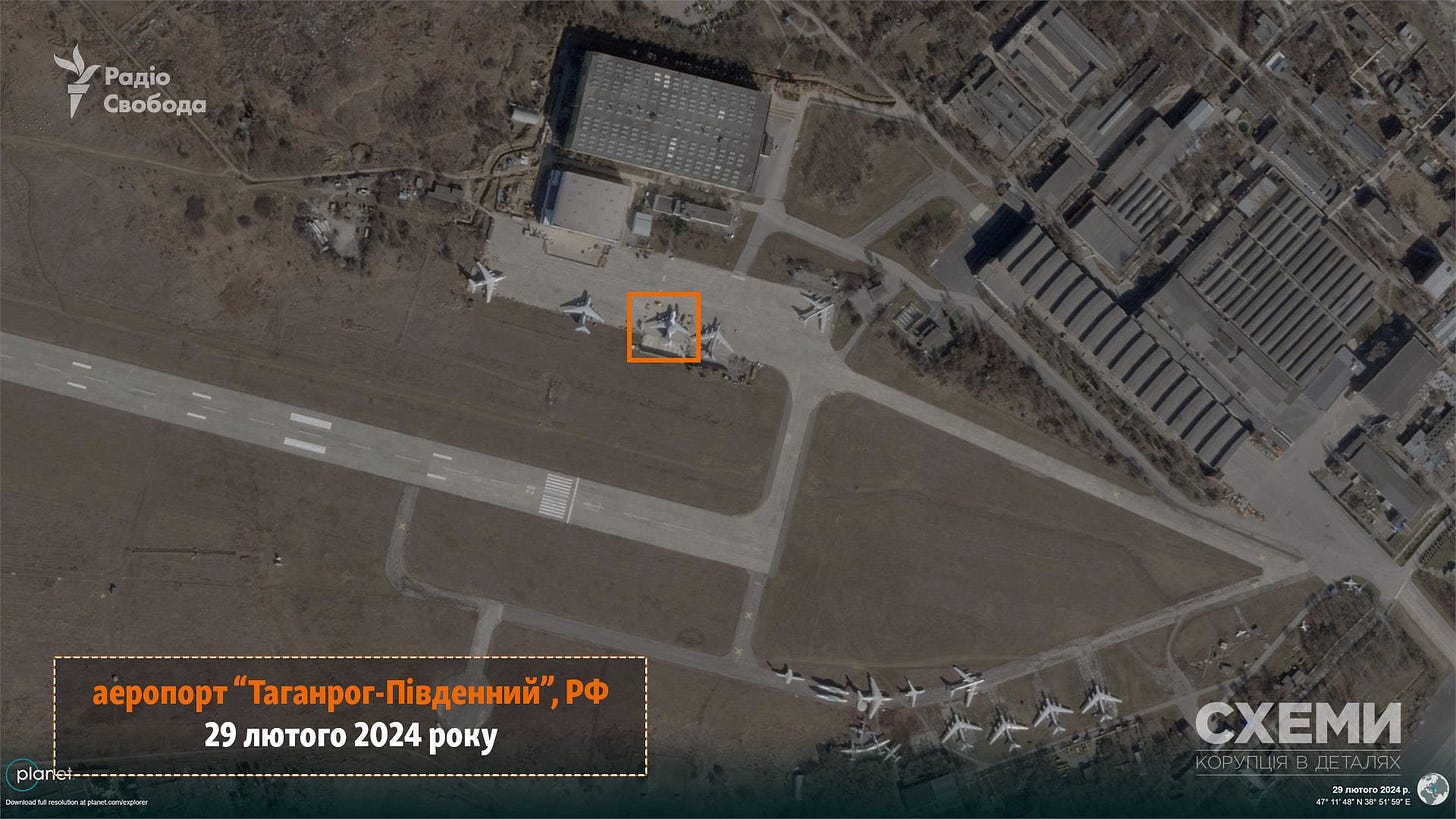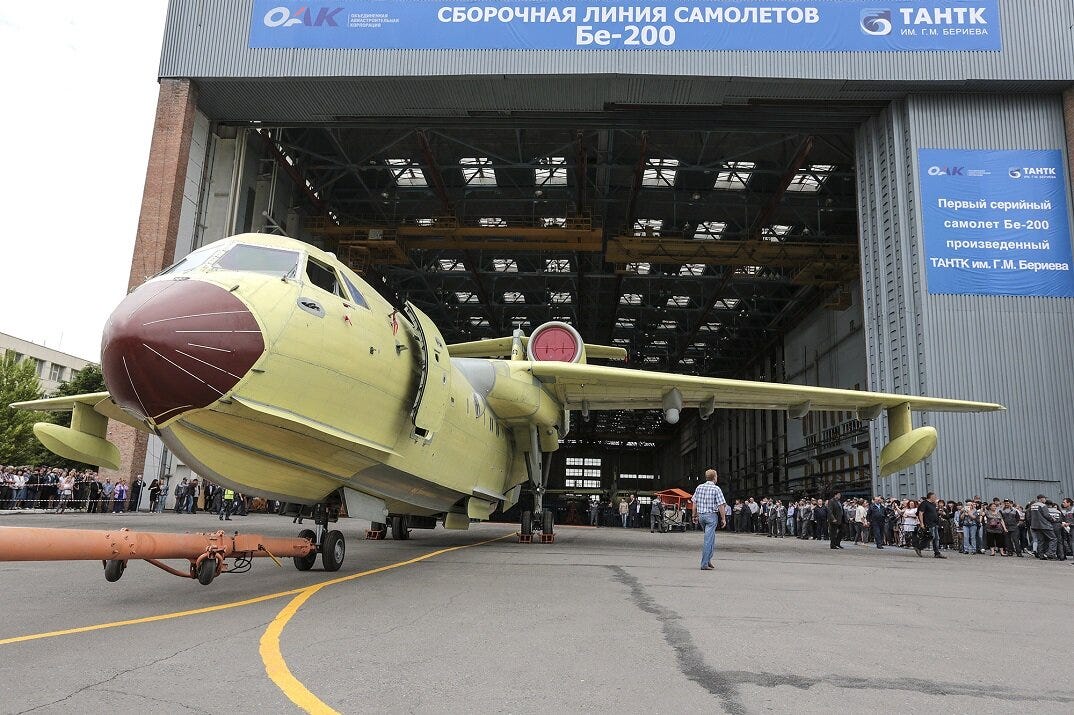Geospatial Analysis - Drone Attack in Taganrog
Did Ukraine manage to destroy another airborne early warning and control (AEW&C) aircraft
On the night of March 9th, Ukrainian forces conducted an operation targeting a Russian aircraft construction and repair plant that specializes in aviation complexes, including the A-50 AEW&C.
The Aviation Scientific and Technical Complex (TANTK) named after G.M. Beriev is located in Taganrog, an industrial city on the Azov Sea coast in Rostov Oblast. The enterprise focuses on developing, producing, modernizing, and repairing aviation complexes with special purposes, like the A-50.
The Frontelligence Insight team conducted a visual analysis using acquired satellite imagery to confirm the damage.
A comparative analysis highlighted scorch marks on the roof of a building identified by our team as a Final Assembly Facility, where it is suspected Russians were conducting repairs.
The day before the attack:
It's important to note that the A-50 is not present on the imagery dated March 8th and March 9th, making it unclear whether it was present in the hangar during the operation. Previous images released by investigative journalists at CXEMU captured an A-50 parked near the hangar on February 29th.
If the drones managed to penetrate the roof, the payload in drones would be enough to cause damage to equipment, and aircraft inside of the hangar. However, there are no indications of a significant fire inside the hangar.
From the available open-source imagery, it appears that the damage occurred near the entrance part of the hangar, with no apparent signs of secondary explosions or intense fire. Consequently, it is challenging to assess the full extent of the damage.
Further examination of satellite imagery shows that there was at least one S-300/400 battery positioned at the airfield during the attack. Unless this air defense battery serves as a decoy, it indicates the ability of Ukrainian drones to effectively penetrate Russian air defense systems even near strategic objects.
To summarize, our team acknowledges that the destruction or damage of the A-50 is not conclusively confirmed based on the available evidence. Nevertheless, it stands as a notable accomplishment for Ukraine to successfully target such an important facility within Russian territory, effectively evading Russian air defenses and inflicting damage.
We are also happy to share that Substack has now enabled direct messaging for our paid subscribers. Please feel free to reach out to us with any requests, questions, or proposals, and we will make an effort to respond to everyone promptly.







I'm not ADA, but someone is clearly asleep at the radar screen. Generalized damage and destruction at a critical base can have knock-on effects, such as delays in repairing a plane. Deep strikes also encourage Russia to redeploy SAM systems to their strategic rear.
Thank you. I value your reports.